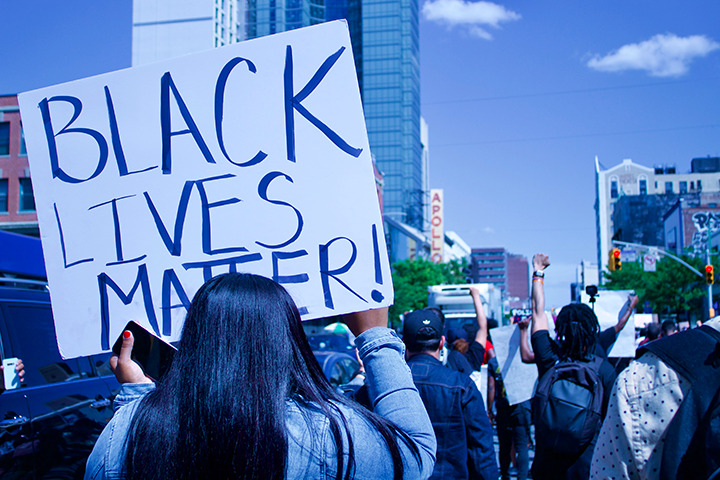In my third week of teaching memoir writing over Zoom, a student sent a personal message to me in the chat. I don’t want to comment.
The story under critique focused on a drug addict’s relapse in a Hollywood spa during the late nineties. The memoir was written in the first person point-of-view through a lens of dark humor. I didn’t know why this particular student objected to participating, so I asked. Why not?
The school where I work has a policy: all students must comment on every story submitted. No exceptions. I glanced at the student in the square box. He bent his head and rubbed his eyes with tight fists before he typed his response. Too many memories.
From reading this student’s homework assignments, I knew he was a Vietnam veteran, a PTSD survivor, and married to a woman diagnosed with multiple personality disorder. I understood the school’s policy, but having a friend who suffers from PTSD and having experienced trauma myself, I knew this man needed an out.
Okay. Do you want me to tell the class or will you?
I will. THANK YOU.
After the student alerted the class, another problem arose. Other students wanted to know if they could withhold feedback too. The reasons were numerous:
I wouldn’t read this type of story.
I don’t like the characters.
I don’t feel comfortable with this situation.
This is too tough to read. It is too raw, too real.
I was facing another quandary: how do I teach memoir writing if the students will not read and critique each other’s work, particularly if that work focuses on trauma? There are plenty of articles written by licensed psychologists who are also memoirists that offer tips on how to write about trauma. It was much more difficult to find anything on how to read and critique trauma memoirs with care. As an educator, it was essential for me to explore this to be sure my classroom wasn’t perpetuating further harm for the writer or the readers.
Memoir provides an opportunity to turn tragedy into art. When trauma is fully processed by the writer, the reader is able to experience pain and healing within the confines of a story alongside the author. This is a goal of all art—to bring the audience into the artist’s world and transform them in a helpful, rather than harmful, way. However, it can be dangerous for students in the room who haven’t processed their own trauma. Another’s story can affect us deeply, in ways we didn’t expect.
Sometimes a writer’s story might illuminate areas in your own life that need healing. As readers, we might not be ready to tackle certain stories because our own traumas have not been identified, addressed, acknowledged, or processed. This happened to me one semester when a student wrote about her recovery from alcoholism. Her words and experiences triggered me over and over again. I wasn’t ready to face my own demons. How could I possibly read and critique a memoir about hers? But as an instructor, I had to offer feedback. I could not make an excuse. I had to step away several times while reading the student’s work, but eventually I returned and finished the critique. From that experience, I realized I had an addiction and needed healing myself. As readers, we bear intimate witness to the writer’s pain. When extending this kind of compassion through reading and critiquing their work, we are, in essence, extending compassion to ourselves.
As psychologist and memoirist Lisa Cooper Ellison wrote in her article, “3 Things to Ask Yourself before Writing about Trauma”: “Most writers, no matter how compassionate, aren’t equipped to help you make sense of your pain.” The same advice applies to most readers who are not trained in dealing with trauma. The majority of readers come to stories seeking education, entertainment, community, or enlightenment; they want to understand themselves and the world in which they live or to alleviate their loneliness. Therefore, it’s important to remember the students’ role in the workshop is to provide critique and suggestions, not to unpack a student’s personal experience. When a reader separates the writer’s experience from skillful storytelling, the reader automatically distances from the pain.
As a workshop facilitator, it’s my job to remind students at the beginning of each session to comment only on craft. As a general rule, critiques focus on one specific craft item that worked well and one specific craft item that could be more effective. For example, “I like the opening paragraph because the sensory details of the cold morning drew me into the story. But I didn’t like the ending because it left me without a resolution to the conflict between the main characters.” Character development, plot construction, sensory descriptions, effective dialogue, vivid settings, well-timed pacing, cohesive structure, and overall theme are just a few of the specific items available for comment. We also examine craft questions together: How is this life experience being shared? Is it effective or not? How else could the writer reach their audience? Being conscious of the author’s trauma and empathetic towards any lingering pain is an essential part of this process.
Additionally, reminding the writers that critiques are only about craft issues and not about content or personal experience helps the writer to not take the criticisms personally. I also reserve the right to interrupt a student critique if the comments veer away from the craft, such as “I’m sorry this happened to you…” or “What a horrible experience, I feel for you…” Those remarks do not belong in a critique class. If the writer and the students want to discuss the personal experience, the students are advised to meet with the writer outside of class.
As readers, we typically operate on three levels: a comfort zone (reading what is safe and familiar), a learning zone (reading uncomfortable topics or unfamiliar genres), and a danger zone (reading to the point of mental or emotional pain). How do you know where you fall on this spectrum? You experiment and observe your reactions. Are you reading something that makes you nauseous? You’re in the danger zone. Are you reading something that piques your curiosity, but also makes you squirm? You’re in the learning zone. When we’re relaxed while reading, we’re in our comfort zone.
If we stay within our comfort zone, only reading what we have read in the past or what we naturally gravitate toward, we’ll never experience growth. Reading outside of our comfort zone challenges us in a positive way, even if it makes us uneasy. It can shake the foundation of our beliefs and show us varied experiences. We can discover a new point of view or vicariously live another life through reading and critiquing the stories of others—even when they are painful. This is crucial as readers, writers, and humans. However, it’s important to identify what you need to feel safe before proceeding in reading and critiquing a fellow writer’s story.
There are simple ways we can take care of ourselves as we read work with themes that are tough for us. Taking a hot bath or drinking a cup of tea can comfort and anchor us before reading. Taking a break after reading is helpful to reset your nervous system. Bookending your critique sessions by meditating or calling a friend can also stabilize your emotions and recenter you. Personally, I take a walk between reading and critiquing each student’s story. I build this time into my reading and critiquing schedule because I know how important the mental, emotional, and energetic space is for me. Finally, it’s important to be mindful of our danger zone, the area where more trauma can be inflicted. Only you can evaluate where this zone is for you.
Lastly, if you know you can’t read and critique a particularly painful memoir, don’t push yourself to the brink of mental and emotional collapse—no learning can take place here for you or for the writer. Honor yourself and your limitations, and share your struggle with the instructor and the writer. The classroom is a place to help, not hurt, each other. It’s our duty as readers, for both ourselves and the writer, to assess what we need to take care of and replenish ourselves when reading intense material. The best critiques require us, as readers, to engage closely with the story, which of course includes its contents. But the focus should be on craft. Asking yourself about the work on a sentence level can help with psychological distance. We can then more objectively examine traumatic stories that might otherwise be too painful to read.
Finally, we can ask ourselves: what have I learned from reading this story? The goal of memoir, after all, is to share lessons learned through our experience. The most effective memoirs acknowledge life is full of challenges—but we do not need to be defeated by tragedy. We can reclaim our personal power, find meaning in the chaos, and share those lessons through story for learning and growth, both for the reader and the writer.
Angela Lam is a memoirist, novelist, and writing instructor. Her memoir, Red Eggs and Good Luck, won both the Mary Tanenbaum Award for Creative Nonfiction and the She Writes Press Memoir Discovery Contest. Her most recent memoir, The Fool and the Magician: A Memoir of Love Told in Tarot Readings, chronicles her midlife crisis and redemption. She currently teaches at Gotham Writers’ Workshop.



